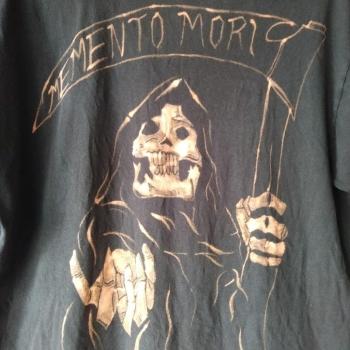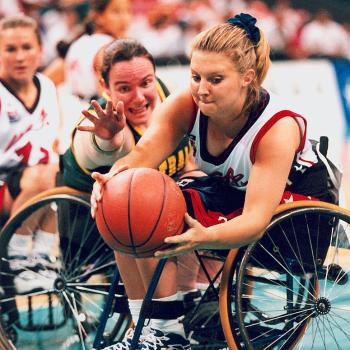Let’s talk about the economics of epidemics. By the time we’ve hit all seven takes for today, we’ll have a to-do item.
#1 I am inclined to believe COVID-19 is for serious.
It can be tough to decipher the reality behind news out of China. Frankly it’s tough to decipher the reality behind any click-provoking, ad-selling story picked up by the modern media. But here is something fairly rare: China, South Korea, Japan, Iran, and Italy all went into freak-out mode once a critical number of local COVID-19 cases emerged.
That’s a pretty diverse slice of geopolitics right there. Five different economic, social, and governmental cultures. Matching reactions. That tells me something is afoot.
In terms of statistics, of the early-outbreaking nations my money is on South Korea for the most reliable figures. My hypothesis is that South Korea had the strongest motivation to test early and often; it has a modern medical system and a relatively healthy populace; and in terms of the reputation of the government for open, democratic livin’, it’s not China or Iran.
Ditto Italy and Japan on the latter two criteria, but I have a sneaking suspicion both those nations were taken more by surprise, whereas it seems to me, looking at this issue from my armchair as a person who hasn’t looked closely at international foreign policy in many, many years, South Korea saw this coming.
So I’m guessing our best early numbers for patterns of infection, morbidity, and mortality are whatever we see in South Korea.
#2 Quarantine works.
From Disease Control Priorities: Improving Health and Reducing Poverty:
The practice of quarantine began in the fourteenth century in response to the Black Death and continues today (Mackowiak and Sehdev 2002). Quarantine and social distancing (such as the prohibition of mass gatherings) during the 1918 influenza pandemic reduced spread and mortality rates, particularly when implemented in the early stages of the pandemic (Bootsma and Ferguson 2007; Hollingsworth, Ferguson, and Anderson 2006). During SARS and Ebola outbreaks, health agencies and hospitals limited disease spread by isolating symptomatic patients, quarantining patient contacts, and improving hospital infection control practices (Cohen and others 2016; Twu and others 2003). During the 2003 SARS pandemic, none of the health care workers in hospitals in Hong Kong SAR, China, who reported appropriate and consistent use of masks, gloves, gowns, and hand washing (as recommended under droplet and contact precautions) were infected (Seto and others 2003).
For an illness like COVID-19, which seems likely to become endemic, the chief benefit of quarantine is slowing the spread of infection. This matters because everyone benefits if you can avoid overwhelming your healthcare system. From the same source:
When pandemics cause large morbidity and mortality spikes, they are much more likely to overwhelm health systems. Overwhelmed health systems and other indirect effects may contribute to a 2.3-fold increase in all-cause mortality during pandemics, although attribution of the causative agent is difficult (Simonsen and others 2013).
Slowing the spread of disease has many potential benefits:
- Shortages of medicines and supplies are lessened because manufacturers can hope to keep pace with increased demand if the incidence of infections and complications is spread out over time.
- Healthcare workers not only therefore have better access to protective equipment, they can also stay healthier if they are not overworked.
- Later-affected localities have more time to learn about the course of the disease and ideal treatments and precautions. There is more time to train healthcare and public safety workers.
- The depth of assistance for an affected community or affected persons within a community is far greater if not everyone is overwhelmed by the illness at the same time.
So while quarantine and self-isolation measures have significant social and economic costs, those costs may be well worth enduring.
#3 Human beings are not omniscient.
This is why the insurance industry exists.
I live in hurricane country. Year after year we face the constant questioning of whether the most recent storm brewing in the Atlantic is gonna be the next Hugo or Andrew or Katrina. And if so, where’s it going to hit? Who’s it going to hurt?
For state governments, there’s a fine balance between failing to act and getting slammed by casualties versus over-reacting too often and becoming the Governor Who Cried Wolf. This is not easy.
In the face of an Ebola or a SARS or a COVID-19, the natural course of prudence is to watch attentively, be a little too careful at first, and gradually relax precautions as the coast clears.
Regardless of whether a given disease proves to be the next bubonic plague or the next round of sniffles, even if we do everything exactly right, there are economic costs to widespread illness. Let’s look at what’s going down with COVID-19.
#4 Economic statistics are imperfect measures.
We need to distinguish between types of economic loss. Parsing all this out is complex, so don’t get all huffy in the next few paragraphs.
Some preliminaries:
- Figures like GDP or Unemployment measure monetized transactions on the legal market. That means that any work that is unpaid, or that is paid for but not reported, doesn’t get “counted.” This will matter in a second.
- Not every quantified economic activity is an equal measure of wealth-generation. If you spend money building a house where there previously was none, that expense represents an increase in wealth quite different from if you spend the same amount of money replacing a house just destroyed in a fire. Both are work. Both represent the creation of wealth. But in the one case you are wealthier than before; in the other you are only replacing wealth that was destroyed.
- Numbers like stock market valuations are measures of expectations; only indirectly do they measure prosperity. However, because many people and institutions depend on stock market investments to fund long-term savings, there is fallout from market downturns.
So if we look at COVID-19, some of the effects of quarantine have no impact on the real wealth of human beings. Let’s begin with a red dinosaur.
In the photo, which is a communal Lenten penance of unknown duration, I am holding a small plush toy made in Lianyungang, China. My daughter spied these at Aldi a year ago, regretted never purchasing one, and this year when they showed up again on the Valentine’s impulse-buy shelves she splurged. In fact she eventually bought up the entire stock of leftover dinosaurs in our community and bestowed them on friends, family, and willing buyers, thus creating a Dinosaur Club. At 99 cents a piece, she thereby added a solid twelve bucks to GDP.
Quarantine measures have since shut down certain Chinese manufacturers. In terms of human flourishing, the loss of red plush dinosaurs is a non-happening. We the dinosaur-custodians are no better or worse off owning an accounted-for plush toy versus owning, say, a sock puppet created at home from salvaged scraps.
In contrast, the loss of basic medicine, essential supplies, and certain durable goods due to quarantine shut-downs is indeed a direct loss of genuine wealth in the form of goods that measurably add to human flourishing in a tangible way.
In the same way, in terms of human well-being for the consumer, it does not matter if one purchases dinner out or makes it at home, if both meals are equally nutritious — even though one will register a much higher number on economic indicators than the other.
That “for the consumer” qualification is of course the big problem with quarantine. For the supplier, the loss of sales hits home hard.
#5 Quarantine puts people out of work who can’t afford to be out of work.
The owner of a massive business selling luxury goods or services (and yes, that red dinosaur is a luxury good — it fills a want, not a need; the needs it does fill could as easily be met through a rag doll and a big hug from a friend) is unlikely to sustain any long term damage if his or her business is run well. Yes, there will be a hit to profits. But for the owners of large businesses maintaining adequate cash reserves, there will be plenty of opportunity to rake in the millions or billions some other year. It’ll be fine.
Who gets hurt when the luxury-economy gets shut down? Employees and marginal business-owners. Low-wage factory, retail, and service-industry workers are unlikely to have the savings necessary to simply not work for weeks on end, and are unlikely to be able to work from home. Small business owners living week-to-week on scant revenues, including many farmers, are in the same boat.
So although quarantine is overall better for the health and well-being of everyone, it also creates instant-poverty for wage-earners and certain entrepreneurs who are kept from working or who lose their customer base.
#6 What this means is you have to go into Advanced Rerum Novarum Mode.
Temporary disruptions call for temporary measures of charity above and beyond the usual, preferred, free-market solutions.
At the most local level, if you have the money to prep for quarantine, you need to be ready to assist those who can’t afford to do so. If your local foodbank is in fact prepared to deliver goods to clients under quarantine, that’s a good destination for cash donations. Otherwise, it behooves us to simply expect that there will be a need to directly feed your less-wealthy neighbors in a situation where your apartment complex or subdivision is put on lockdown.
Regionally, health care providers can put in place free or sliding-scale screening and treatment stations. Hospitals can choose to waive bills for patients who cannot afford treatment and need it (and additionally they can set aside the usual over-pricing rigamarole that characterizes American healthcare for those who do have the ability to pay).
At the state and federal level, bankruptcy, criminal, and civil laws can be reformed to take into account both the temporary hit from emergency quarantine measures and the longterm regulatory biases that unduly penalize the poor.
#7 The Church will not lack for work.
I’m cynical. I haven’t noticed state and federal governments being super-effective at protecting the poor thus far, and I doubt Coronavirus is going to change that. I predict we’ll see a few grand gestures, some of them genuinely helpful, but for the most part the priority of our rulers will remain with keeping the servant-class just hale enough to continue churning out the services.
Thus, no matter how much we imagine the government will save us, the Church will still have to fill in the gaps. The need for practical assistance through crisis situations is only going to grow.
For a financially-solvent upper middle class family, quarantine may require some digging into emergency savings. Not a big deal. That’s why we have emergency savings.
But for those who can’t afford to take a financial hit, the scramble to meet basic needs during quarantine will require digging some big financial holes. Likewise remember the widow and orphan: Quarantine slows but does not stop the spread of disease. Some of those killed by COVID-19 will be adults responsible for supporting their families.
Thus we reach an unsurprising conclusion: We’ll need to do what it is the Church is called to do.
Not complicated. Just Lenten.













